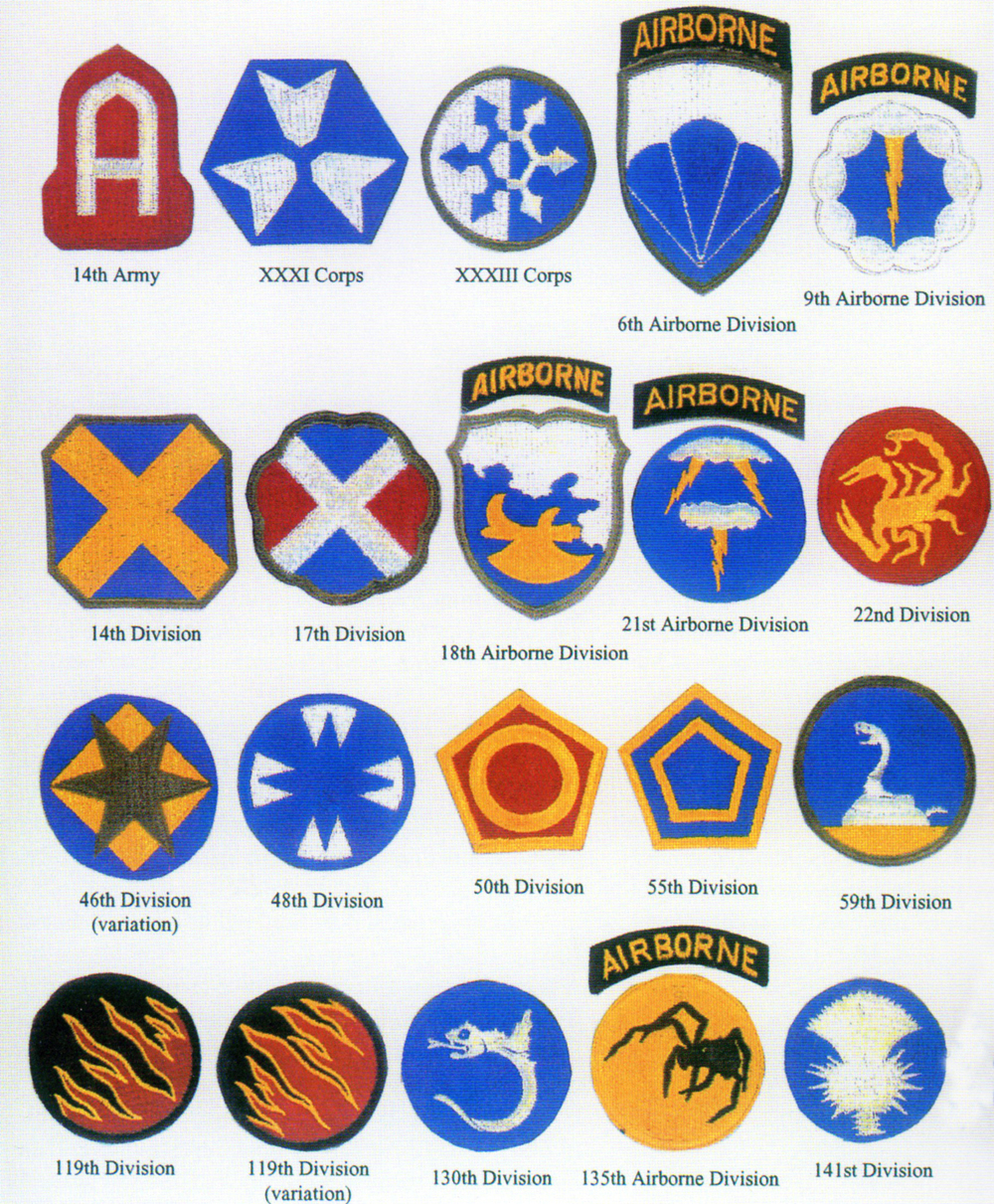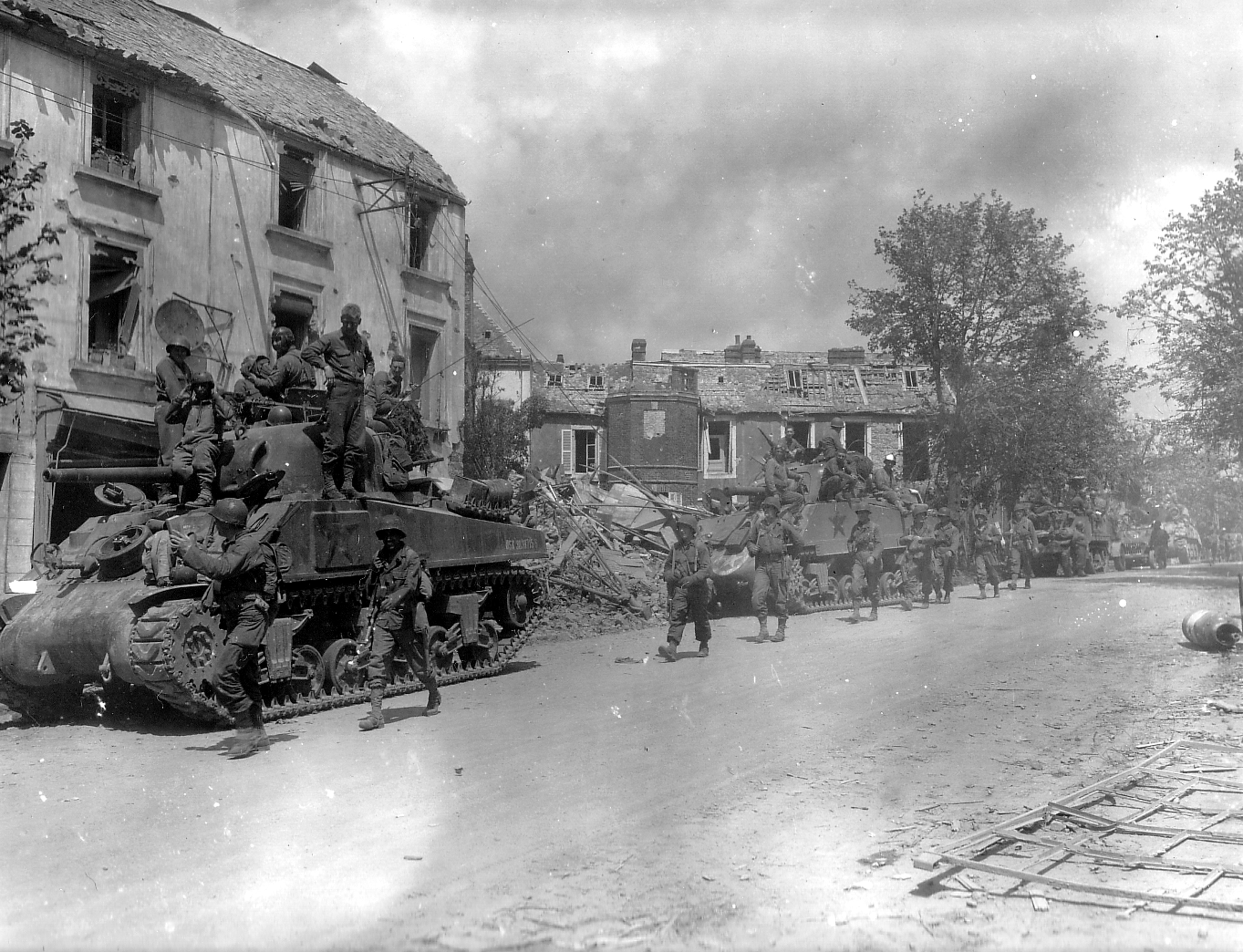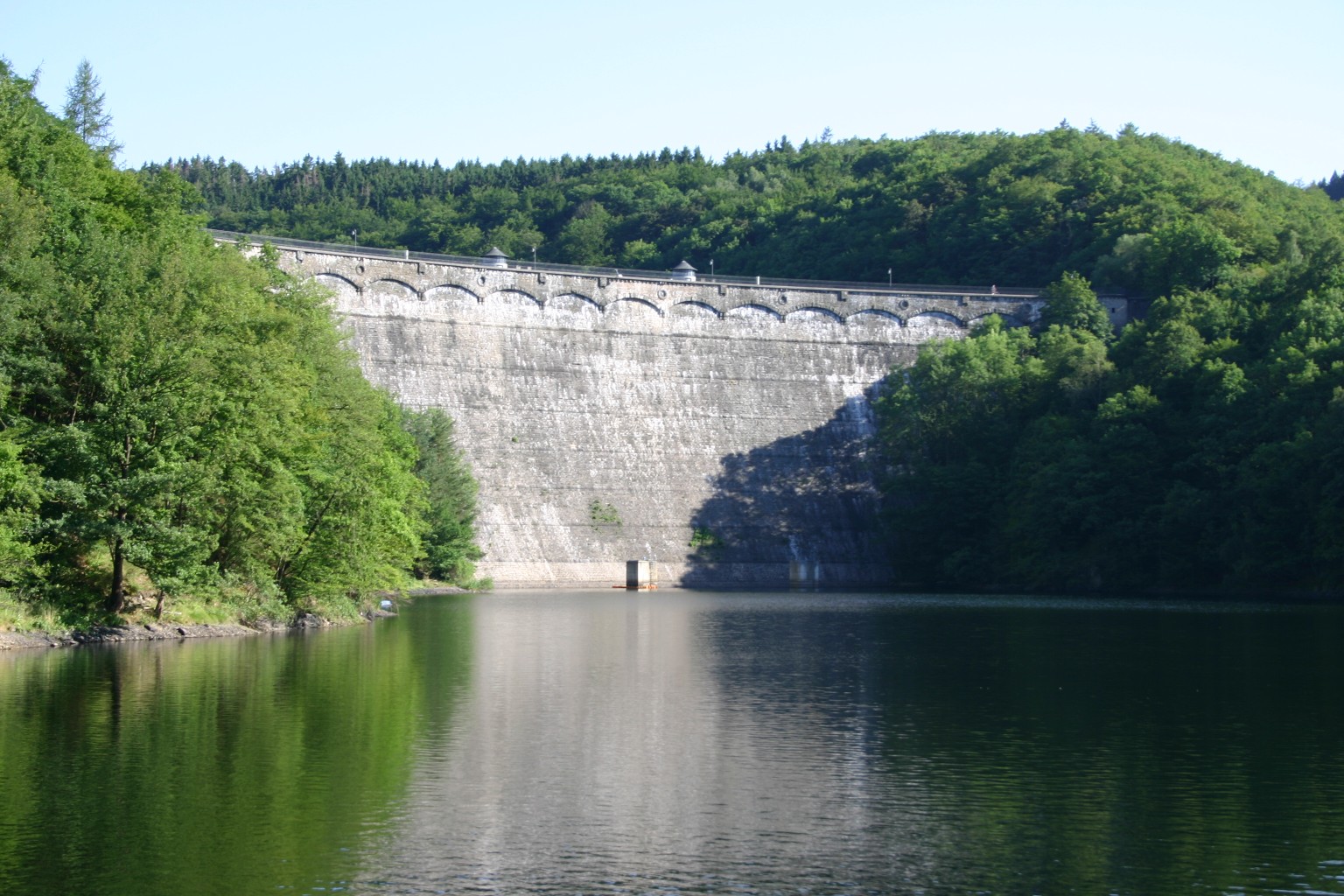|
Battle Of Hürtgen Forest
The Battle of Hürtgen Forest () was a series of battles fought from 19 September to 16 December 1944, between United States Armed Forces, American and Wehrmacht, German forces on the Western Front (World War II), Western Front during World War II, in the Hürtgen Forest, a area about east of the Belgian–German border. Lasting 88 days, it was the longest battle on German ground during World War II and it is the second longest single battle the U.S. Army has ever fought after the four-day-longer Battle of Bataan. The U.S. commanders' initial goal was to pin down German forces in the area to keep them from reinforcing the front lines farther north in the Battle of Aachen, where the US forces were fighting against the Siegfried Line network of fortified industrial towns and villages speckled with Pillbox (military), pillboxes, tank traps, and minefields. The Americans' initial tactical objectives were to take the village of Schmidt and clear Monschau. In a second phase the Allie ... [...More Info...] [...Related Items...] OR: [Wikipedia] [Google] [Baidu] |
Western Front (World War II)
The Western Front was a European theatre of World War II, military theatre of World War II encompassing Denmark, Norway, Luxembourg, Belgium, the Netherlands, the United Kingdom, French Third Republic, France, and Nazi Germany, Germany. The Italian campaign (World War II), Italian front is considered a separate but related theatre. The Western Front's 1944–1945 phase was officially deemed the European Theater of Operations, United States Army, European Theater by the United States, whereas Italy fell under the Mediterranean Theater of Operations, United States Army, Mediterranean Theater along with the North African campaign. The Western Front was marked by two phases of large-scale combat operations. The first phase saw the capitulation of Luxembourg, Netherlands, Belgium, and France during May and June 1940 after their defeat in the Low Countries and the northern half of France, and continued into an air war between Germany and Britain that climaxed with the Battle of Brita ... [...More Info...] [...Related Items...] OR: [Wikipedia] [Google] [Baidu] |
Battle Of Arnhem
The Battle of Arnhem was fought during the Second World War, as part of the Allies of World War II, Allied Operation Market Garden. It took place around the Netherlands, Dutch city of Arnhem and vicinity from 17 to 26 September 1944. The Allies had swept through France during World War II, France and Belgium in World War II, Belgium in August 1944, after the Operation Overlord, Battle of Normandy. Market Garden was proposed by Field Marshal Sir Bernard Montgomery, who favoured a single push northwards over the branches of the Lower Rhine River, allowing the British Second Army (United Kingdom), Second Army to bypass the Siegfried Line and attack the important Ruhr industrial area. The First Allied Airborne Army was to capture the bridges to secure a route for the Second Army with US, British and Polish airborne troops dropped in the Netherlands along the line of the ground advance, being relieved by the British XXX Corps (United Kingdom), XXX Corps. Farthest north, the British ... [...More Info...] [...Related Items...] OR: [Wikipedia] [Google] [Baidu] |
XIX Corps (United States)
XIX Corps was a corps-sized formation of the United States Army, that served during World War II and the Cold War. There have been three U.S. Army formations given the designation "XIX Corps," none of which are lineally related. History XIX Corps (I) The first iteration of the XIX Corps was authorized by the National Defense Act of 1920 and was to be composed of units of the Organized Reserve located primarily in the Ninth Corps Area. The corps headquarters and headquarters company were constituted on 29 July 1921 in the Regular Army, allotted to the Ninth Corps Area, and assigned to the Sixth Army. The corps headquarters was organized in February 1922 with Reserve personnel at San Francisco, California. The headquarters company was organized in February 1923 with Reserve personnel at San Francisco. The headquarters conducted staff training from 5–19 June 1927 with the headquarters, 30th Infantry Regiment, at the Presidio of San Francisco. The corps headquarters was with ... [...More Info...] [...Related Items...] OR: [Wikipedia] [Google] [Baidu] |
1st Infantry Division (United States)
The 1st Infantry Division (1ID) is a combined arms division of the United States Army, and is the oldest continuously serving division in the Regular Army. It has seen continuous service since its organization in 1917 during World War I. It was officially nicknamed "The Big Red One" (abbreviated "BRO") after its shoulder patch and is also nicknamed "The Fighting First". The division has also received troop monikers of "The Big Dead One" and "The Bloody First" as puns on the respective officially sanctioned nicknames. It is currently based at Fort Riley, Kansas. The 1st Infantry Division was first deployed to fight in France in World War I, fought extensively in Africa, Italy, France, and Germany during World War II, and participated extensively during United States' campaigns in the Vietnam War. The 1st Infantry was stationed in what became West Germany from 1945 to 1955, and its units rotated to West Germany throughout the remainder of the Cold War. It subsequently deploye ... [...More Info...] [...Related Items...] OR: [Wikipedia] [Google] [Baidu] |
Rhine
The Rhine ( ) is one of the List of rivers of Europe, major rivers in Europe. The river begins in the Swiss canton of Graubünden in the southeastern Swiss Alps. It forms part of the Swiss-Liechtenstein border, then part of the Austria–Switzerland border, Swiss-Austrian border. From Lake Constance downstream, it forms part of the Germany-Switzerland border, Swiss-German border. After that the Rhine defines much of the Franco-German border. It then flows in a mostly northerly direction through the German Rhineland. Finally, the Rhine turns to flow predominantly west to enter the Netherlands, eventually emptying into the North Sea. It drains an area of 185,000 km2. Its name derives from the Gaulish language, Gaulish ''Rēnos''. There are two States of Germany, German states named after the river, North Rhine-Westphalia and Rhineland-Palatinate, in addition to several districts of Germany, districts (e.g. Rhein-Sieg-Kreis, Rhein-Sieg). The departments of France, department ... [...More Info...] [...Related Items...] OR: [Wikipedia] [Google] [Baidu] |
Normandy Landings
The Normandy landings were the landing operations and associated airborne operations on 6 June 1944 of the Allies of World War II, Allied invasion of Normandy in Operation Overlord during the Second World War. Codenamed Operation Neptune and often referred to as D-Day (after D-Day (military term), the military term), it is the largest seaborne invasion in history. The operation began the liberation of France, and the rest of Western Europe, and laid the foundations of the Allied victory on the Western Front (World War II), Western Front. Planning for the operation began in 1943. In the months leading up to the invasion, the Allies conducted a substantial military deception, codenamed Operation Bodyguard, to mislead the Germans as to the date and location of the main Allied landings. The weather on the day selected for D-Day was not ideal, and the operation had to be delayed 24 hours; a further postponement would have meant a delay of at least two weeks, as the planners had re ... [...More Info...] [...Related Items...] OR: [Wikipedia] [Google] [Baidu] |
Allies Of World War II
The Allies, formally referred to as the United Nations from 1942, were an international Coalition#Military, military coalition formed during World War II (1939–1945) to oppose the Axis powers. Its principal members were the "Four Policemen, Big Four" – the United Kingdom, United States, Soviet Union, and Republic of China (1912–1949), China. Membership in the Allies varied during the course of the war. When the conflict broke out on 1 September 1939, the Allied coalition consisted of the United Kingdom, French Third Republic, France, and Second Polish Republic, Poland, as well as their respective Dependent territory, dependencies, such as British Raj, British India. They were joined by the independent dominions of the British Commonwealth: Canada, Australia, Dominion of New Zealand, New Zealand and Union of South Africa, South Africa. Consequently, the initial alliance resembled Allies of World War I, that of the First World War. As Axis forces began German invasion of ... [...More Info...] [...Related Items...] OR: [Wikipedia] [Google] [Baidu] |
Siegfried Line Campaign
The Siegfried Line campaign was a phase in the Western European campaign of World War II, which involved engagments near the German defensive Siegfried Line. This campaign spanned from the end of Operation Overlord and the push across northern France, which ended on 15 September 1944, and concluded with the opening of the German Ardennes counteroffensive, better known as the Battle of the Bulge. Background German forces had been routed during the Allied break-out from Normandy. The Allies advanced rapidly against an enemy that put up little resistance. But after the liberation of Paris in late August 1944, the Allies paused to re-group and organise before continuing their advance from Paris to the River Rhine. The pause allowed the Germans to solidify their lines—something they had been unable to do west of Paris. By the middle of September 1944, the three Western Allied army groups; the Anglo-Canadian 21st Army Group (Field Marshal Sir Bernard Montgomery) in the nort ... [...More Info...] [...Related Items...] OR: [Wikipedia] [Google] [Baidu] |
Ardennes
The Ardennes ( ; ; ; ; ), also known as the Ardennes Forest or Forest of Ardennes, is a region of extensive forests, rough terrain, rolling hills and ridges primarily in Belgium and Luxembourg, extending into Germany and France. Geologically, the range is a western extension of the Eifel; both were raised during the Givetian age of the Devonian (382.7 to 387.7 million years ago), as were several other named ranges of the same greater range. The Ardennes proper stretches well into Germany and France (lending its name to the Ardennes department and the former Champagne-Ardenne region) and geologically into the Eifel (the eastern extension of the Ardennes Forest into Bitburg-Prüm, Germany); most of it is in the southeast of Wallonia, the southern and more rural part of Belgium (away from the coastal plain but encompassing more than half of the country's total area). The eastern part of the Ardennes forms the northernmost third of the Grand Duchy of Luxembourg, also called ... [...More Info...] [...Related Items...] OR: [Wikipedia] [Google] [Baidu] |
Urft Dam
The Urft Dam () is a 58.50 metre high dam in the southwestern part of the state of North Rhine-Westphalia in Germany. It was built in 1905. The dam impounds the Urft (river), River Urft in the district of Kreis Euskirchen, Euskirchen to create the Urft Reservoir (''Urftstausee''), 2.16 km2 in area. The reservoir is also called the ''Urftsee'' (Lake Urft). The Urft Dam, which was constructed during the period 1900 to 1905, and the Urft Reservoir, which was then the biggest reservoir in Europe, having belonged since 1993 to the Eifel-Rur Water Board (''Wasserverband Eifel-Rur''). Location The Urft barrier system that comprises the Urft Dam and Urft Reservoir is located in the Rur Eifel, a subdivision of the North Eifel region, south of the Kermeter ridge, north-northeast of the Dreiborn Plateau between Simmerath-Rurberg (in the neighbouring region of Aachen) to the west-northwest and Schleiden-Gemünd (Schleiden), Gemünd (Kreis Euskirchen, Euskirchen district) to the east ... [...More Info...] [...Related Items...] OR: [Wikipedia] [Google] [Baidu] |
Obersee (Rur)
The Obersee near Simmerath in the borough of Aachen is the main forebay of the Rur Reservoir on the River Rur in the Eifel mountains of Germany. Its barrier is the Paulushofdamm. The reservoir, like that of the Rur Dam, belongs to the Eifel-Rur Water Company (''Wasserverband Eifel-Rur''). The reservoir provides drinking water. Location The dam system, which comprises the ''Paulushofdamm'' and ''Obersee'', lies in the Rur Eifel, a part of the North Eifel, southwest of the Kermeter, north of the Dreiborn Plateau and east of the Monschau Hedge Land near Simmerath (borough of Aachen). It is located immediately below the Urft Dam, which impounds the waters of the Urft that flow from the east to create the Urft Reservoir, and immediately above the Rur Dam which impounds the waters of the Rur to form the Rur Reservoir. While the dam belongs to the High Fens-Eifel Nature Park, the large eastern arm of the Obersee in the north lies within the Eifel National Park The Eifel ... [...More Info...] [...Related Items...] OR: [Wikipedia] [Google] [Baidu] |
Rur Dam
The Rur Dam () is a 77.2 metre high dam located in the southwestern part of the state of North Rhine-Westphalia in Germany. It was built in 1939 and impounds the Roer to form the Roer Reservoir (''Rurstausee'' or ''Rursee'') which is 7.83 km2 in area. It lies within the districts of Aachen and Düren. History The original dam was built between 1934 and 1938 from earth and stone, with an inner lining of loam, coming into service in 1939. During the Second World War, on February 10, 1945, to impede the advance of the Anglo-Canadian 21st Army Group during Operation Veritable, water was released from the sluice gates; this delayed supportive action (Operation Grenade) by the American Ninth Army for two weeks. Construction from 1955 to 1959 raised the height of the dam by 20 meters to its present height of 77 meters above the riverbed. Headwaters and tailwaters The headwaters of the Rur Reservoir, with their length in kilometres (km), according to the ''Deutsche Grundkart ... [...More Info...] [...Related Items...] OR: [Wikipedia] [Google] [Baidu] |










